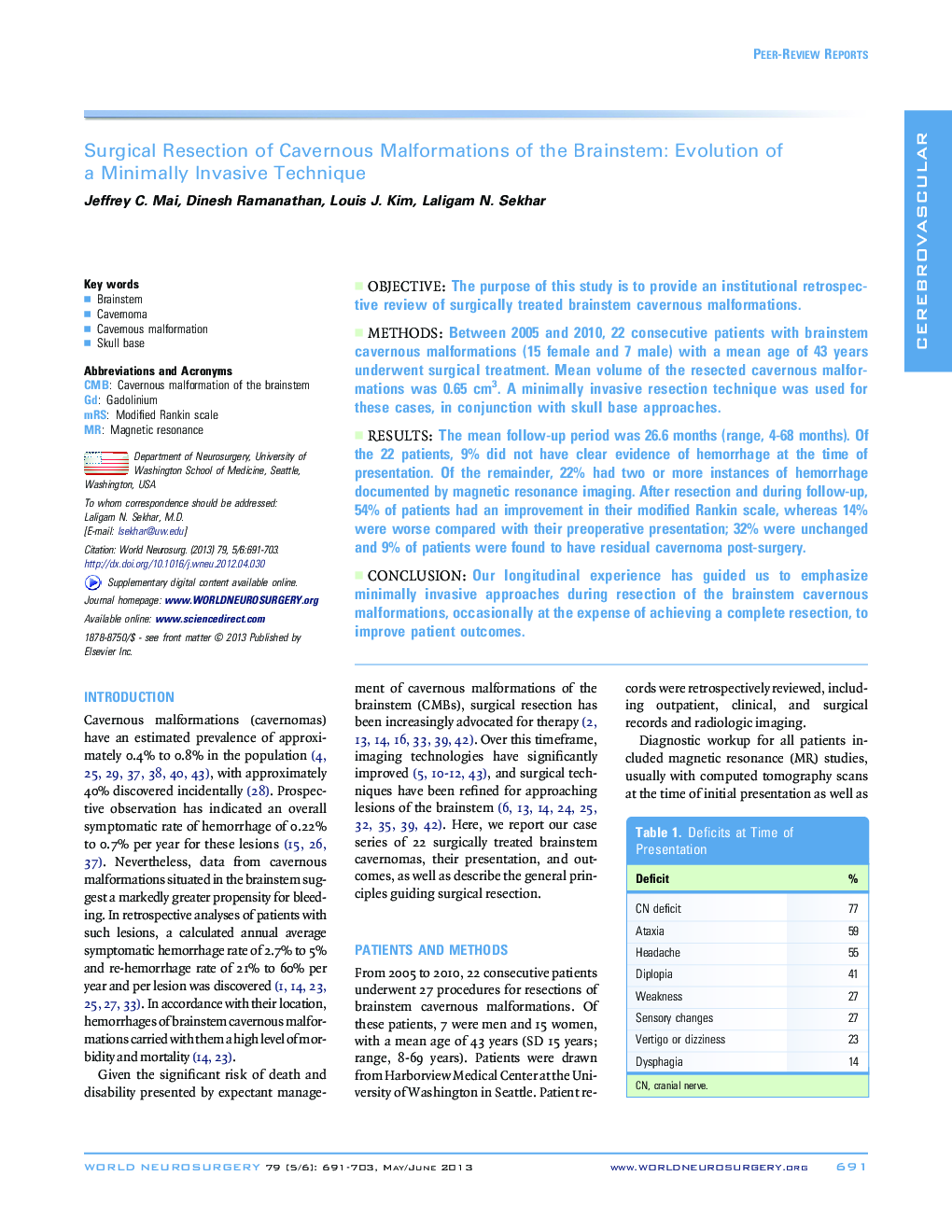| Article ID | Journal | Published Year | Pages | File Type |
|---|---|---|---|---|
| 3096392 | World Neurosurgery | 2013 | 13 Pages |
ObjectiveThe purpose of this study is to provide an institutional retrospective review of surgically treated brainstem cavernous malformations.MethodsBetween 2005 and 2010, 22 consecutive patients with brainstem cavernous malformations (15 female and 7 male) with a mean age of 43 years underwent surgical treatment. Mean volume of the resected cavernous malformations was 0.65 cm3. A minimally invasive resection technique was used for these cases, in conjunction with skull base approaches.ResultsThe mean follow-up period was 26.6 months (range, 4-68 months). Of the 22 patients, 9% did not have clear evidence of hemorrhage at the time of presentation. Of the remainder, 22% had two or more instances of hemorrhage documented by magnetic resonance imaging. After resection and during follow-up, 54% of patients had an improvement in their modified Rankin scale, whereas 14% were worse compared with their preoperative presentation; 32% were unchanged and 9% of patients were found to have residual cavernoma post-surgery.ConclusionOur longitudinal experience has guided us to emphasize minimally invasive approaches during resection of the brainstem cavernous malformations, occasionally at the expense of achieving a complete resection, to improve patient outcomes.
